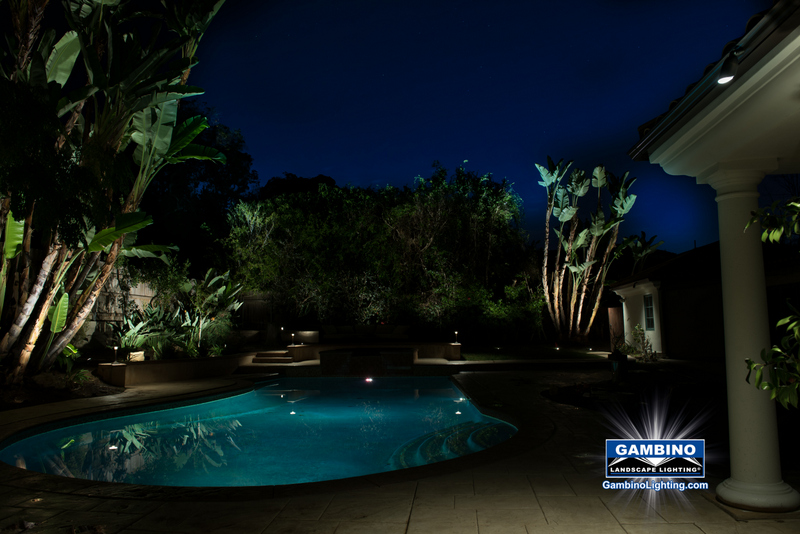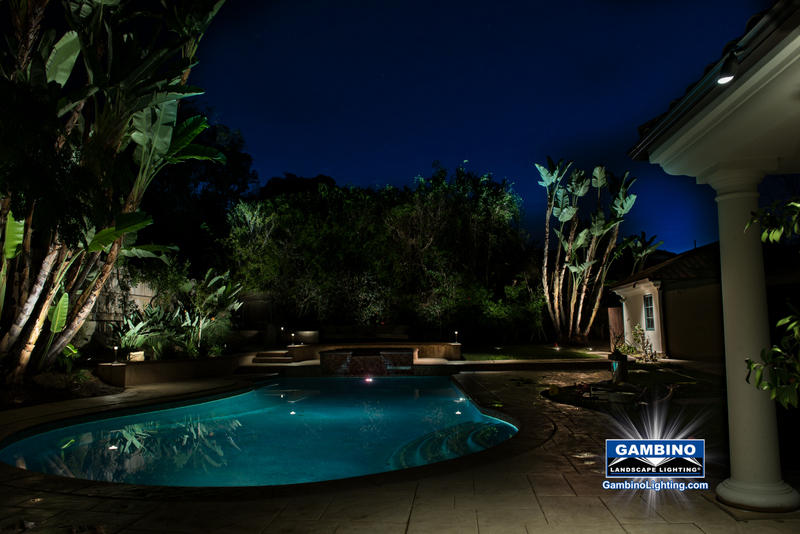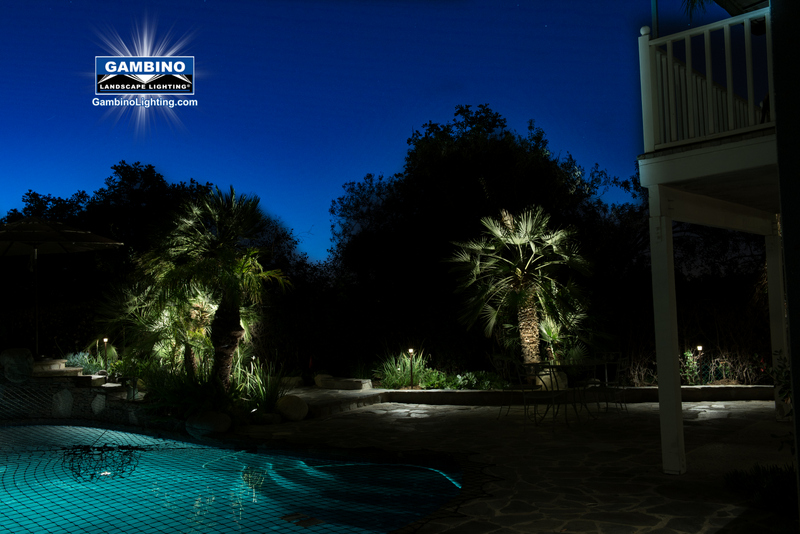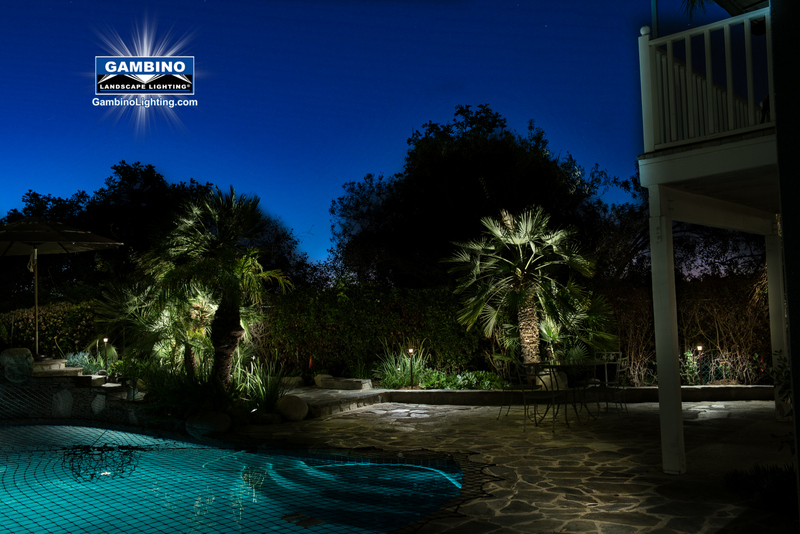26 Aug The importance of Fill lighting to your landscape lighting scene
By Mike Gambino
When talking about the difference between high quality landscape lighting and the average run of the mill plain and standard type, the conversation more often than not revolves around supportive or additive lighting. It’s a simple concept: add a soft fill, a bright boost, and a few splashes of light across the background, and your scene will automatically look better and more professional. However, it’s important to remember that contrast is an essential element of aesthetically pleasing lighting, because it’s one of a few visuals which allow us to perceive three dimensional depth in a two dimensional medium. Not to mention that high contrast visuals are generally viewed as more aesthetically pleasing than their low contrast counterparts.
So, if contrast is so important, why do we focus so much on adding light to our scenes to make them look better? That’s where added or fill lighting comes into play. By adding light in a subtle way instead of leaving surrounding spaces dark, we can create more meaningful and purposeful contrast in our scenes, thus adding depth and creating a sense of visual dynamics. One of the most popular methods using this additional lighting is called fill.

Notice the right side of the pool is dark

With the addition of some soft fill lighting to the right side of the pool this night scene really comes alive
While fill light can be helpful in most situations, especially with subjects that are illuminated with brighter and lots of reflective surfaces, it’s most useful when making sure it is much dimmer so it doesn’t detract from areas of more interest. Landscape light is complex, because every surface in the natural and manmade world reflects, refracts, or absorbs light to some degree. Essentially, when you’re outside at night using fill is crucial for adding contrast to your exterior lighting.
The magic ingredient for a picture-perfect night scene is the nuances of light that play together for a great composition.
Regardless of your property, you are going to have dramatic light, a high intensity source, focused on the focal point objects. Apart from the accent light that defines the lighting, you also need to have a fill light. Fill light controls the lightness and darkness of the resulting shadows created by the accent light. It acts as a secondary light source that doesn’t create any visible shadows. For example…think of a bright sunny day when the sun is directly overhead. People faces will have deep shadows under their eyebrows. Fill light will help to illuminate those areas that are in too much shadow.

Focal points are effectively illuminated but there is no transitional lighting between them making it look spotty to the viewer

Soft lighting is added in the foreground on the pool deck and between the accent lighted palm trees making the scene more attractive and aesthetically pleasing to the viewer
How to use Fill lighting
Usually, the fill light has to be placed opposite to the main light so that any shadows on the subject that are on the side away from the key source are lit up. When shadows are unveiled, immense details are revealed that were otherwise hidden away. When you use fill light, make sure that it has less intensity than the main light. You might also want to consider the effects of ambient light (from other light sources in the garden).
As compared to the main primary lighting, the fill light is half its brightness or less. However, if you feel your lighting seems to suffer from excessive brightness, you can use softer lights, place diffusers, optic lenses or place fixtures further away from the subject.
Since all lights are bound to create shadows, the fill light should be placed as close as possible to the camera-to-subject axis. You will notice that all the shadows created by the key light move on behind the subject and are no longer noticeable by your camera.
SELECTING A FILL SOURCE
Using Reflectors
Reflecting or bouncing light off walls and secondary subjects is one method of adding fill light to your landscape. Simply put, reflectors just reflect light by aiming lights onto the dark spots to diffuse unwanted shadows. You can choose the amount and brightness of the fill by choosing from reflectors of various sizes and surfaces.
USING Direct or Filtered light
Placing lights up in trees and filtering it through the leaves of the trees can be a very effective method of casting a wide amount of light onto a space. Lawns which are typically very difficult to use fill light on are usually very effectively illuminated this way. Placing light sources high up and away so light spread is very wide and diffuse can also be a very effective way of using fill light. Glare control is typically very important when employing these types of effects.
CREATIVE USES FOR FILL LIGHT
Whichever way fill lighting is used it is important that the source is concealed so it can be appreciated for optimum effect. The best type of fill lighting is that which is not consciously noticeable. general rule of thumb is that if one is commenting about this type of secondary or terziary form of lighting then it is probably not being used properly.
 This landscape lighting blog is published by Mike Gambino of Gambino landscape lighting inc. all rights reserved. Mike is a professional
This landscape lighting blog is published by Mike Gambino of Gambino landscape lighting inc. all rights reserved. Mike is a professional  landscape lighting system designer/ builder and has been designing, installing and maintaining landscape lighting systems for more than 26 years. Mike resides in the Los Angeles area with his wife and 2 sons. To visit his website go to www.Gambinolighting.com . To inquire about hiring Mike please click here .
landscape lighting system designer/ builder and has been designing, installing and maintaining landscape lighting systems for more than 26 years. Mike resides in the Los Angeles area with his wife and 2 sons. To visit his website go to www.Gambinolighting.com . To inquire about hiring Mike please click here .
Blog articles may be published with permission on other websites without editing or removing links.



No Comments